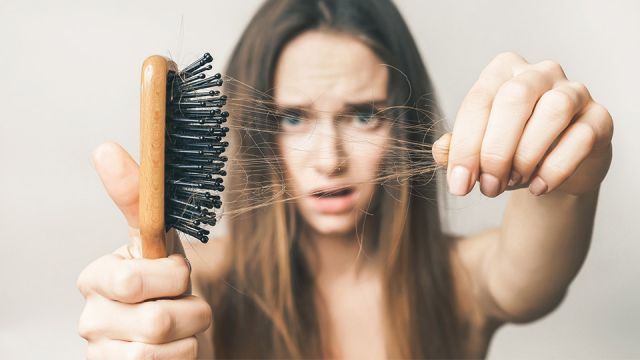Understanding Hair Loss
Hair loss is a common reason for a patient to visit us in the clinic. For men and women, even the slightest amount of hair loss can cause distress, feelings of self-consciousness and concern. Annually in the US, over $2 billion yearly is spent on treatments for loss and thinning of hair.
It is normal for a man or woman to shed anywhere between 100-200 hairs a day, and almost everyone experiences natural thinning and textural changes to the hair as they age. There are many options for treatments, but unfortunately, there is no magic cure.
When a patient is seen in the office for hair loss a thorough exam and history will always be taken and you may be asked questions like: How long has this been going on? Is the hair loss diffuse and occurring all over the scalp, or is it just in one area? Are you taking any new medications, have you had recent surgery or any other significant stressors in the past year? What type of hairstyle do you currently wear and what types of products are used? A thorough medical history is also essentially at narrowing down the potential causes for each individual patient. Most often, treatment can be initiated right away. However, you may be asked to also have your blood drawn or to have a skin biopsy taken from your scalp to determine the exact cause of your hair loss.
There are many different types of hair loss, including the following:
Telogen Effluvium
This type of loss occurs several months to one year after any significant stress. This may include a stressful life event like the loss of a family member, major surgery, childbirth or divorce. This type of hair loss is most times temporary but can be extremely worrisome to the patient.
Androgenetic Alopecia
This is a common diagnosis, and is responsible for a significant amount of hair loss patients in our office. This type of hair thinning can present as early as the early 20s and usually shows specific patterns. For women, it usually presents as a widening of the hairline part at the top of the scalp (known as the crown of the scalp). For men, they may notice thinning and hair loss on the back of the scalp of the frontal hairline.
Alopecia Areata
This type of hair loss happens when your body’s immune system attacks hair follicles. Most commonly it presents as clumps of hair that fall out and leaves behind a completely smooth scalp. We usually will see round, smooth patches on the scalp with this condition. Sometimes the loss may include the entire scalp – Alopecia Totalis. In some, rarer, cases it may involve the entire body in which case the diagnosis is Alopecia Universalis.
Traction Alopecia
This is a more permanent form of hair loss which we see currently in patients who have worn hairstyles that pull on the hairs such as tight braids or extensions. This loss generally occurs over time and many times is permanent. With medical treatments, many patients will see fine regrowth of the hair; however, most patients do not return to the initial thickness or fullness of the hair.
There are currently only two treatments the FDA has approved for hair loss. Topical Minoxidil (branded as Rogaine) is a solution or a foam that increases blood flow around the hair follicle. This treatment is available over the counter and is for both men and women. Finasteride (branded as Propecia) is a prescription medication that is very effective at decreasing the level of DHT on your scalp. Finasteride is a treatment for men, or post-menopausal women only, and requires a prescription from your medical provider. There are also other medications and over the counter supplements that show promise in helping to encourage hair regrowth and strengthening.
If you are experiencing hair loss or hair thinning, please contact us to make an appointment to be evaluated by one of our medical providers.

